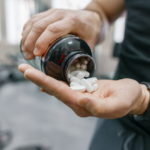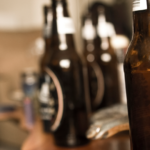Medically reviewed by
What is prostate enlargement?
The prostate gland is about the size of a walnut and surrounds the top part of the urethra (the tube that carries urine from the bladder to the end of the penis), just under the base of the bladder. As men age, benign prostatic hyperplasia (BPH) can cause prostate enlargement.
Prostate enlargement resulting from BPH is not the same as prostate cancer. On its own, BPH isn’t anything to worry about, but its symptoms can cause considerable discomfort, inconvenience and reduced quality of life.
BPH becomes more common as men age. About 50% of all men aged over 50 have BPH, increasing to over 80% for men aged 80 or older1.
Symptoms of prostate enlargement
Many men with BPH have urinary symptoms because the region of the prostate that’s usually affected is beside the urethra.
As the prostate enlarges, the urethra narrows and the normal passage of urine is impaired.
If you notice any of these symptoms, you should talk to your doctor.

Over 2.4 million Australian men and boys live with incontinence.
Causes of prostate enlargement
Men are more likely to have BPH as they age and if they have metabolic syndrome, diabetes, high blood pressure, obesity, or a diet that’s low in fruit, vegetables and legumes1.
There is a genetic component to BPH, so some men inherit an increased risk of prostate enlargement2.
Testosterone stimulates cell division in the gland, causing prostate growth. Molecules involved in inflammation can also stimulate prostate gland cell division1.
Diagnosis of prostate enlargement
Your doctor will ask you some questions about your urinary symptoms, perform an examination and probably test your urine. They may send you for blood tests or an ultrasound scan.
Subscribe to our newsletter

Treatment of of prostate enlargement
Men who aren’t too bothered by urinary symptoms of BPH may choose to do nothing or make lifestyle changes. Symptoms may be treated by lifestyle changes, medication or surgery.
Procedures like water vapour (steam) therapy or prostatic urethral lift can also be used to treat BPH.
TURP is the most common and best understood procedure used for BPH in Australia, but minimally invasive techniques are becoming more common3.
Health effects of prostate enlargement
BPH is not associated with an increased risk of prostate cancer4.
While BPH may not directly threaten your health, its symptoms can have a significant effect on your wellbeing. The urinary symptoms of BPH can be inconvenient, limit daily activities, and cause considerable stress and anxiety.
The impact of lower urinary tract symptoms from BPH on men’s quality of life is comparable to the effect of asthma5.
Since the prostate continues to grow as men age6, the symptoms of BPH may become more severe over time7, but sometimes symptoms stabilise or even improve over time.
Treating BPH can prevent these complications.
What to do about prostate enlargement
If urinary symptoms are bothering you, make an appointment to see your doctor.
References
[1] Chughtai et al., 2016. Benign prostatic hyperplasia. Nature Reviews Disease Primers
[2] Ng & Baradhi, 2020. Benign Prostatic Hyperplasia. In: StatPearls. Available from: https://www.ncbi.nlm.nih.gov/books/NBK558920/
[3] Patel & Bariol, 2019. National trends in surgical therapy for benign prostatic hyperplasia in Australia. ANZ Journal of Surgery
[4] Chang et al., 2012. Is there a link between BPH and prostate cancer? The Practitioner
[5] Hong et al., 2005. The importance of patient perception in the clinical assessment of benign prostatic hyperplasia and its management. BJU International.
[6] Williams et al., 1999. Prostatic growth rate determined from MRI data: age-related longitudinal changes. Journal of andrology
[7] Platz et al., 2012. Incidence and Progression of Lower Urinary Tract Symptoms in a Large Prospective Cohort of United States Men. Journal of Urology













